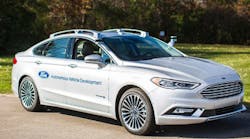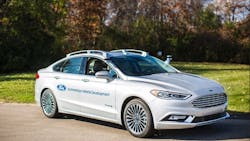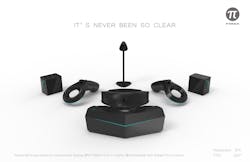The 2017 Consumer Electronics Show (CES) kicks off this week in Las Vegas, and by all indications, it looks to be bigger than ever. That being said, the glitz isn’t as bright for many established technologies and products—smartwatches and HDTVs, for instance. 4K video content is now the norm, as are 4K television sets that are already reasonably priced at most electronics stores.
That’s not to say that the latest and greatest televisions, smartphones, and smartwatches won’t be on display, or that there won’t be anything new. It’s just that other things may overshadow the more typical consumer products highlighted at CES.
Probably the biggest thing on my list to see is in the automotive technology arena. This includes everything from self-driving cars to smart city infrastructure. Self-driving technology isn’t new—we covered it years ago when it first started to raise its head at CES—but this year is different, both in terms of looks and content. Take Ford’s modified Fusion hybrid, for example (Fig. 1).
1. Ford will be showing off a new Fusion hybrid with better-integrated self-driving sensors, so it looks less like a science project.
There will be a large increase in the number and sophistication of the sensor systems, but they will be less noticeable. There will be more vehicle-to-vehicle (V2V) and vehicle-to-infrastructure (V2I) as V2X becomes more mature.
The other part to the automotive story is the deep learning support that is cropping up. Some of this discussion will be behind closed doors, but it affects everyone from NVidia and Intel to Ford and Toyota. Cars already have more computing horsepower than most homes, and deep learning will require even more computing hardware.
While virtual reality (VR) and augmented reality (AR) will be used to show off cars and automotive technology, they will also be out in force as standalone solutions. Gaming has always been big at CES and VR gaming is starting to take off. Prices are falling, and quality and sophistication are on the rise. I’m particularly looking forward to checking out Pimax’s 8K VR glasses (Fig. 2). The company’s 4K unit was a hit at CES 2016.
2. Pimaxâs 8K virtual reality glasses bring true high resolution for each eye along with a wide field of view.
Of course, the big issues with VR glasses are resolution and the need for something to drive it, because this is a lot of pixels. But while resolution does matter, 8K may be closing in on the upper limit in terms of realism. Lower-resolution glasses still have to deal with the jaggies and other noticeable artifacts.
The Internet of Things (IoT) will remain at the top of the hype heap. That includes sports bands, smartwatches and bolt-on, wrap-on, wristband medical devices. It also includes the plethora of home security offerings, wireless smart speakers, and so on.
I’ll also be checking out some of the technology behind the array of wireless earbuds that will be out in force at CES. Their small size is a challenge from a performance and battery life perspective. More on this later.
I expect the usual improvements with 3D printing, including falling prices and higher performance. Printing food is so last year, but there will be more of it on the show floor, along with more options than you can shake a stick at.
While I downplayed television technology at the start of the article, there will be a lot new that will have an impact on consumers. OLED sets are moving from prototypes to production in larger formats. The action scenes will be playing on 4K high dynamic range (HDR) sets that will be the preference for high-end buyers, along with quantum dot support. It reminds me of a quote from “All that Jazz”: “Oh, God, it is better.” Of course, you need the latest Blu-Ray disks and players to get that, or possibly a 4K video stream from the Internet.
So with that, it’s off to CES to see what really shows up...and to find those new, hidden gems that only reveal themselves at the show.



